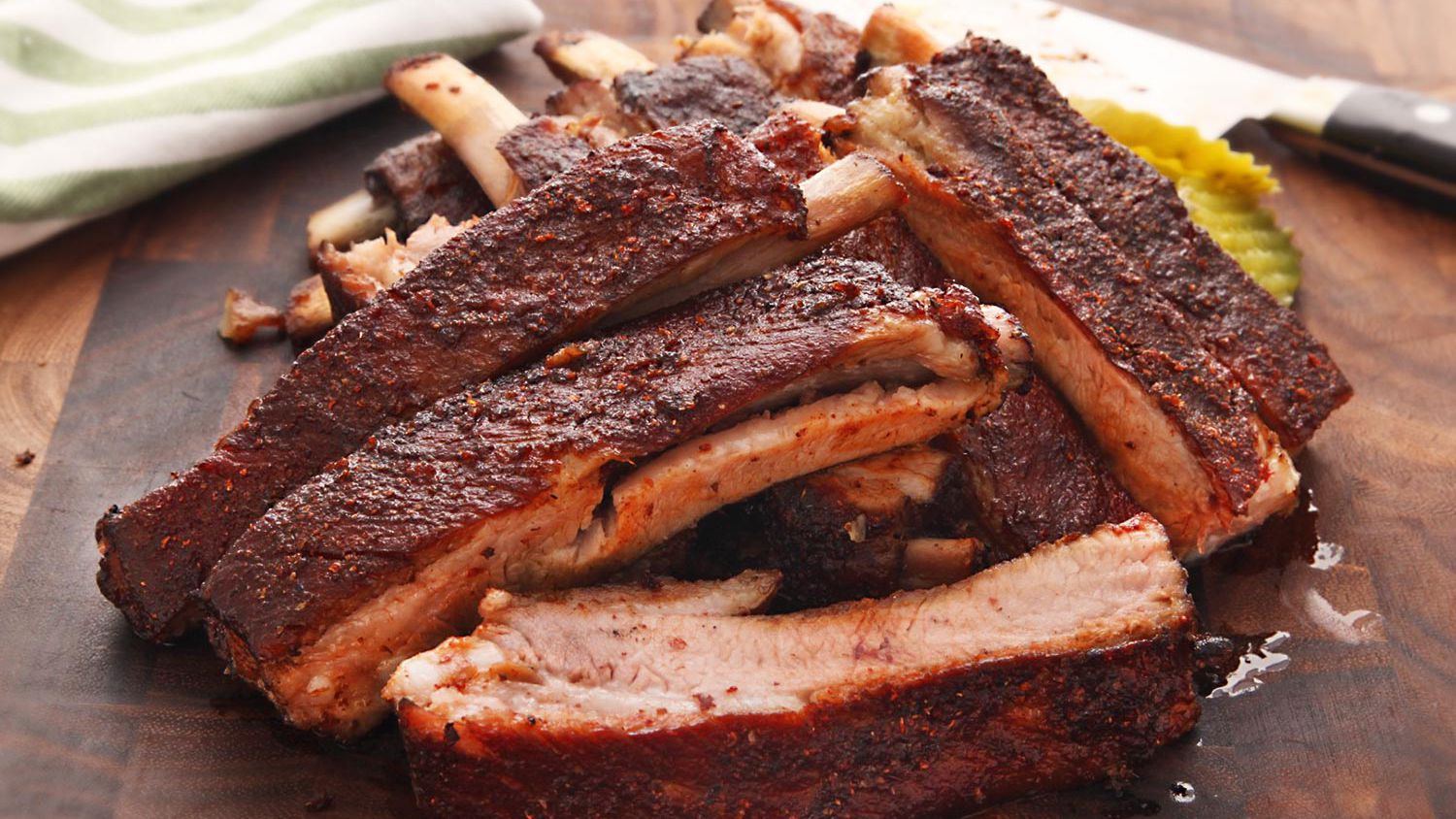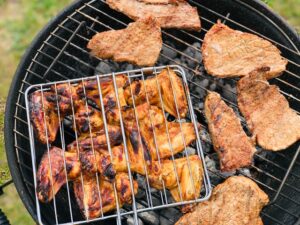A BRIEF BBQ HISTORY IN THE USA.
Regions throughout the nation take great pleasure in their barbeque, and it is a gastronomic treat that is very American in its origins.
Even while few would disagree that making good barbecue involves skillful seasoning and just the right amount of smoke, to a Southerner, it takes a little bit more than that—it takes care, devotion, and attention to detail.
Despite the fact that Southerners like debating the finer issues of sauce and technique, barbecue serves to bring people together considerably more often than it serves to divide them. Visiting your neighborhood BBQ shop on any given day, you’ll find high-powered professionals dressed in smart suits sitting next to homemakers or construction workers.
Kids as young as two years old may be seen eating pulled pork, sliced brisket, and pig ribs in their own backyards or at community events, drinking sweet tea side by side and enjoying the same foods.
Whenever you ask ten different Southerners where the finest barbecue can be found, you’re certain to hear ten different answers—and each of them is likely to mention a barbecue spot they’ve been frequenting for a long period of time. A pitmaster will be able to provide you with his or her barbeque recipe, as well: Secrets are being kept from the public.
Barbecue establishments are commonly run by families, and recipes are often passed down through generations.
However, although most Southerners agree that true barbecue entails cooking meat low and slow over an open fire, they sometimes argue on the best sort of meat to use or the best type of sauce to serve it with. On top of that, there are quarrels over preferred side dishes and beverages. All of us have an opinion, and we are more than eager to express it to one another in public.
HISTORY OF THE BARBECUED RIBS
Using a fire to cook meat is nothing new; in fact, it has been practiced since the discovery of fire itself. Aside from that, smoking meat has been used for centuries to keep it fresh when refrigeration is not an option. Adaptations from numerous cultural and regional influences are incorporated into our modern-day barbeque, which is a combination of these two historic ways.
Because of the people who established a certain section of the nation, the method they cooked and seasoned their meat, and the ingredients that were accessible, each region’s barbecue developed its own unique style.
To explain where the name “barbecue” comes from, a variety of creative hypotheses have been advanced.
Numerous people have said that it comes from the French word barbe à queue, which literally translates as “head to tail cooking,” which is similar to whole-hog barbecue in North Carolina. The Bar BQ Ranch in Texas, where the cattle were branded with “BQ,” according to some sources. The Taino people of the Caribbean, on the other hand, are credited with coining the term barbecue, which refers to a frame of sticks over which they dried and grilled meat. The word barbacoa in Spanish and barbeque in English were derived from their language.
ORIGINS FROM THE SOUTH
Barbecue styles abound across the South, with endless varieties in both meat and sauce to choose from. A variety of various inspirations had an impact on the myriad intricacies of this American classic, which evolved through time into what it is today.
The barbecue technique that became popular in Virginia and the Carolinas grew from a Native American method of drying or roasting meat on a grill made of green twigs over a smoldering fire that the British had learned from the native people.
Cooking techniques were blended with those introduced from England, and the meat was basted with butter or vinegar to keep it moist while it was being prepared. When it comes to sauce ingredients in the nineteenth century, salt and black or red pepper were common—and you may still find this recipe today, particularly in Carolina-style whole-hog barbecue, which is drenched in a vinegary pepper sauce.
As Americans went westward, they brought with them their traditions of pit-cooking meat outdoors, spreading barbecue over the Appalachian Mountains into Kentucky and Tennessee, and then across the Mississippi River into Texas and other states. A diverse range of flavors and styles have resulted as a consequence of the contributions of immigrants from different cultures to each location.
The Piedmont region of North Carolina was home to a significant German population, a fact that historians attribute to the popularity of German-style coleslaw (which is vinegar-based rather than mayonnaise-based) as a barbecue side dish in the state’s history.
It is believed that German immigrants in central South Carolina were responsible for the introduction of mustard, which they used to top their pulled pork dishes with a tangy, brilliant yellow sauce to finish.
Germans and Czechs also inhabited a considerable portion of Texas, and they brought with them the practice of smoking meat to the region. It was at meat markets, where butchers sold smoked meat to cotton pickers on sheets of butcher paper, along with crackers and pickles, that the first barbecue restaurants in Texas sprung up. Due to the abundance of mutton (lamb) in Kentucky, it was the meat of choice, and it was always served with a spicy stew known as burgoo.
American regional barbecue styles were influenced by the growth of commercial food manufacturing and distribution. When smaller portions of pork shoulder became commercially accessible in the Piedmont region of North Carolina during the early twentieth century, pitmasters started cooking them instead of the entire hog, a practice that has continued to this day.
A similar period saw the introduction of tomato-based sauces, courtesy of commercially available goods such as ketchup and ketchup. Most Texas meat markets switched from purchasing and slaughtering forequarters of cattle to cooking pre-packaged portions in the 1960s, with brisket being the preferred cut as a result of the growth of a national meat-packing industry with standardized cuts.

TODAY’S CUISINE: BBQ
As time has passed, the distinctions between barbecue zones have become more blurred. Tennessee barbecue is as diverse as the state’s terrain, ranging from smoked shoulder and sweet, tomato-based sauce in the Appalachian Mountains to eastern Carolina-style whole hog and slaw in the western part of the country.
The robust libation may be found in barbecue sauce in whiskey country, while Memphis is known for its smoked shoulder and dry-rubbed ribs, among other dishes.
A popular dish in Kansas City is wet ribs with a tomato-based sauce, as well as beef brisket, which is a byproduct of the city’s past as a cattle stockyard. Many different kinds of sauces may be found on menus in Alabama.
These vary from vinaigrette to ketchup-based varieties to the characteristic white barbecue sauce. Pork shoulder and ribs are also available.
In addition, don’t think that mustard-based sauces are the only thing available in South Carolina; you’ll find anything from thin tomato-based sauces along the North Carolina border to hot vinegar-based sauces in the state’s northeastern region.
I’m not sure what to call it.
Grilling is considered a word in the South, and the grilling of meat does not include the utensils used to prepare the meat for cooking.
In the South, how is it defined?
Authentic barbecue entails cooking meat over a low and slow heat until it is soft and tasty, which is commonly done using huge, cheap, and difficult chunks or entire animals. The meat, of course, is important, but the sauce and sides are also important. Each area of the South has its own kind of barbeque, and each region has its own twist on it. Furthermore, everyone has an opinion on what is the best course of action.
I’m not sure where it is, but it’s somewhere.
Despite the fact that barbecue is now found all over the world, its origins may be traced back to the American South, namely to Virginia and Kentucky, the Carolinas, and Texas.
WHERE CAN I FIND THE MOST DELICIOUS MEAT?
Because certain species were more easily accessible than others, particular regional favorites developed.
At spite of the fact that pig is likely to be found in practically any barbecue place, some meats are more popular in particular areas than others.
CHICKEN THAT WILL HAVE YOUR FINGER-LICKING IT
Even while many pitmasters include chicken on their menus, smoked chicken is particularly popular in Maryland, northern Alabama, and Georgia..
INVITE THE PIG TO THE OUTDOOR
When it comes to classic barbecue, pork is perhaps the most popular meat. Wholehog barbecue is the preferred method of cooking in eastern North Carolina’s mountains. Hogs are roasted over a wood fire, low and slow. Then everything is sliced and pulled by hand, even the skin in certain instances. Pork shoulder or hams are more often found in other parts of the world, though.
THERE’S NO BEEF IN THIS HOUSE!
Cattle are allowed to graze freely over vast expanses of land in Texas and the Midwest, where they are raised for meat. A variety of barbecue dishes including brisket, beef ribs, and hot links are popular in this area.
EXCEPT FOR THIS, EVERYTHING IS FINE.
A popular dish in Kentucky’s mountain area, mutton is a slice of tough meat that can be made very soft by gently cooking it. While goat barbecue isn’t as popular as beef barbecue in Texas, don’t be shocked if you see it on the menu somewhere in the state’s interior. If you live in specific parts of Mississippi, you can also find goat.
If you search hard enough, you will find turkey, lamb, and even duck.
A SAUCE IS COMPRISED OF WHAT?
Many barbecue fights have erupted over this vital component of the barbeque. A barbecue sauce’s basis is often made from one of the following ingredients: vinegar, tomato/ketchup, mustard, or a combination of ingredients. Sauces may comprise two or more of these ingredients, although often just one taste is prominent.
It is also possible to use a variety of sweeteners, ranging from sugar to molasses and honey. A veritable rainbow of sauces has resulted, with each location having its own preferred kind. The appropriate sauce, according to many barbecue enthusiasts in Texas, is simply no sauce at all.
SAUCE MADE FROM RED TOMATOES
This sauce may be found all over the world, but each location has its own unique take on it. In Texas, you’ll get a taste of Mexico’s influence in a hot pepper-enhanced version of the cuisine you love. To make sticky and sweet ribs, the sauce is sweetened with brown sugar or molasses, which is a specialty of Memphis barbecue.
SOUP WITH A BASIS OF WHITE MAYONNAISE
This acidic sauce, which is often found in northern Alabama, mixes the tastes of mayonnaise, vinegar, and black pepper to create a dish that is great when served over smoked poultry. The consistency varies depending on the designer; it may be thin or thick depending on the artist’s preferences.
BASED ON THE COUNTRY OF WORCESTERSHIRE
This sauce, which is accessible in western Kentucky, is arguably the most difficult to come by of the regional sauces. It’s created from a combination of vinegar and Worcestershire sauce and is traditionally served with lamb and mutton dishes.
TOMATO SAUCE WITH A YELLOW MUSTARD BASE
They enjoy it this way in central South Carolina, with a lot of brown sugar and/or honey added to make it a little sweeter.
SAUCE WITH A VINEGAR FLAVOR
This sauce is native to eastern North Carolina and Virginia, where a blend of cider vinegar and crushed red pepper is traditionally used to bast whole-hog barbecued meats in.
MINE OR YOUR OPINION?
Additionally, several Southern areas have strong opinions regarding what should be served with their barbeque. In addition to the traditional barbecue fare of baked beans, coleslaw, hush puppies, potato salad, French fries, corn on the cob, and slices of white bread, different regions of the barbecue belt provide a variety of unique and delectable dishes.
WHERE TO FIND OUT MORE INFORMATION (pictured counterclockwise from top)
BBQ plates in Texas are incomplete without a handful of these garnishes on top.
HASH
This stew-type meal, which is particularly popular in South Carolina, is often cooked using fresh hog shoulder and served over rice.
BURGOO
It is similar to Brunswick stew in that it is generally made with pig or chicken along with a variety of vegetables, and in many areas, it is made with mutton to give it a particularly rich, gamey taste.
PORK STEW FROM BRUNSWICK
Even though its origins are up for question, Brunswick stew is a must-have dish in Georgia, Virginia, and portions of the Carolinas and Tennessee, where it is served with pulled pig or ribs as an accompaniment to barbecue. There are bits of vegetables, pig, beef, and/or poultry in this tomato-based stew.
DRINKS
What you use to wash down your barbeque, much like the meat, sauce, and sides, is determined by where you live. Coke and sweet tea, for example, are popular beverages in the Southern United States and the Caribbean.
Big Red is the beer of choice in the Texas Hill Country, whereas other regions of the state provide locally manufactured beer. Cheerwine, a cherry-flavored soft drink that has been a fixture in North Carolina since its introduction in 1917, is the drink of choice there.





